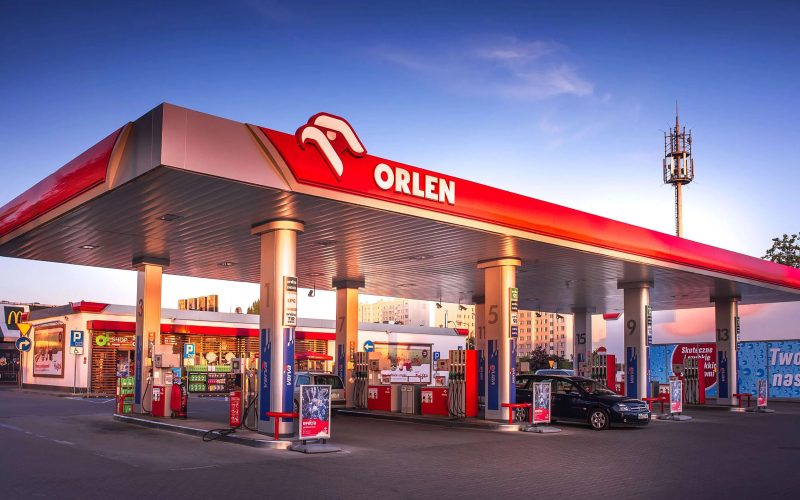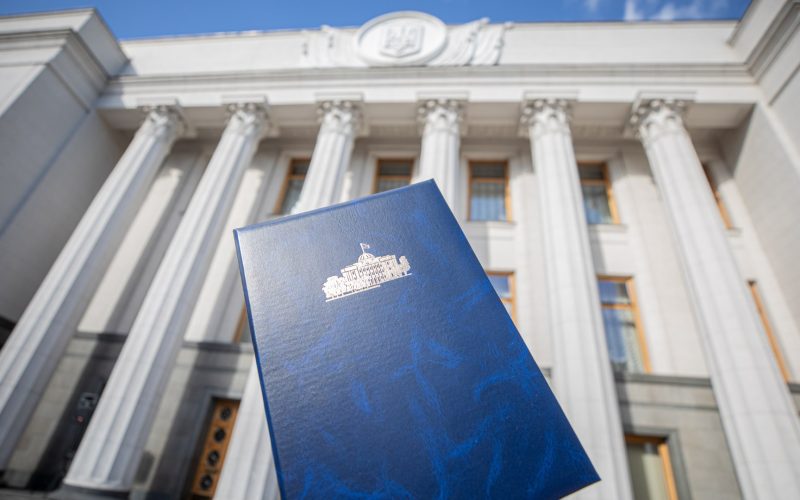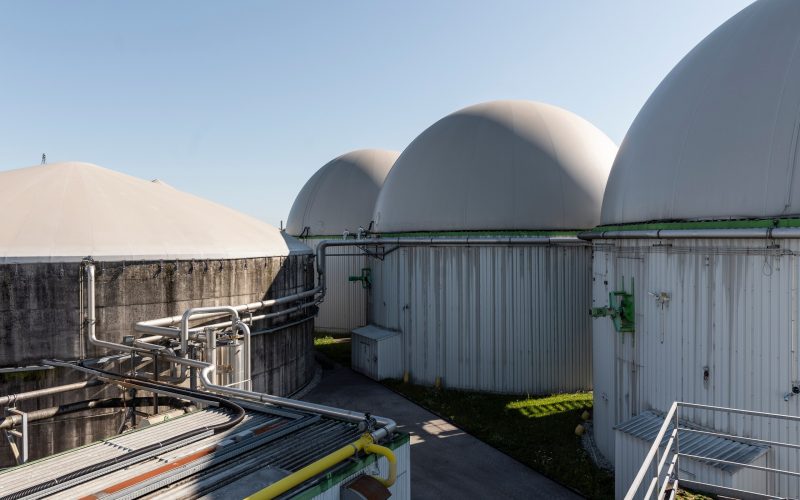Biomethane in Ukraine: opportunities and development — event materials and speakers’ statements
On June 12, 2025, the Hilton Hotel hosted a large-scale conference that brought together a number of international and Ukrainian experts and demonstrated significant interest in the biomethane topic. The event highlighted the economic feasibility and financing models for biomethane projects, the environmental benefits and sustainability aspects, as well as the challenges and opportunities for the growth of the biomethane sector in Ukraine.
Due to the wide range of topics and a large number of speakers, experts and market players constructively discussed the existing barriers to the sector together with representatives of the authorities. The UABIO team took part in all three sessions of the conference. UABIO Chairman of the Board Georgii Geletukha also moderated the last of them.
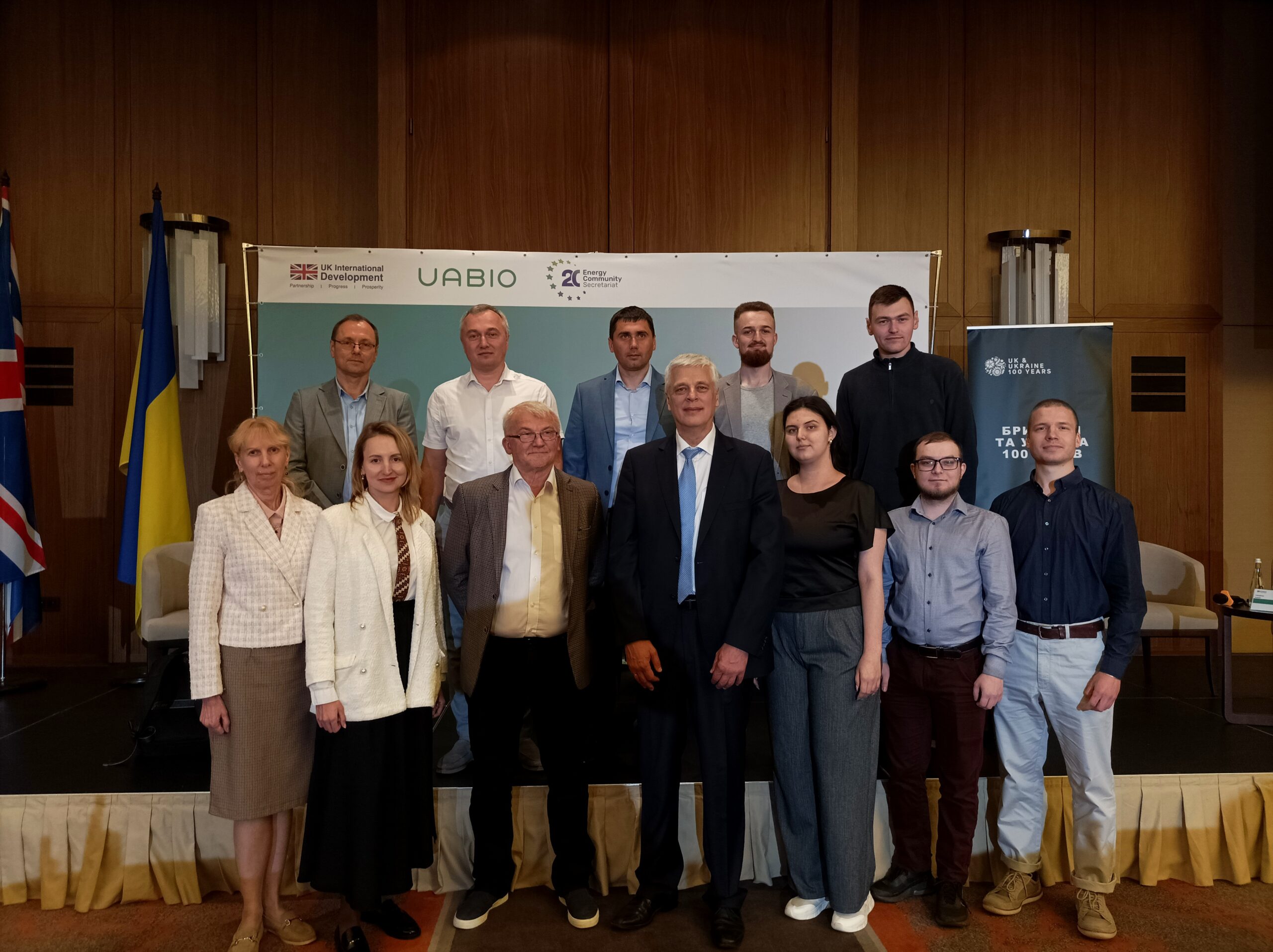
The event was opened by:
Karolina Cegir, Energy Community Secretariat: “This is an evolution and a revolution. Because everything has changed. Biomethane is the heart of these changes. Ukraine has done a lot even despite the difficult years of war and has a great potential to help achieve the EU’s goals of decarbonization and energy independence”.
Anna Sandor, Commonwealth and Development Office (TBC): “The biogas sector in Ukraine is developing rapidly and we are proud to be working with you in this area. If the Ukrainian sector continues to progress as we want it to, it will also be a great opportunity for UK investors”.
Mykola Kolisnyk, Ministry of Energy of Ukraine: “I am glad that an event about such an important sector is taking place in Kyiv. The green transition is not only about the environment, it is also about security and independence from Russian gas. Today’s discussion is not only about biomethane, it is a discussion about the energy sustainability of Ukraine and the European Union”.
Olena Lenska, the Department of Renewable Energy at the State Agency on Energy Efficiency and Energy Saving of Ukraine: “Biomethane is now a strategic issue. It is important that despite the war, or perhaps because of the war, we have taken the first step for the development of the industry. We have given a boost to our entrepreneurs and farmers”.
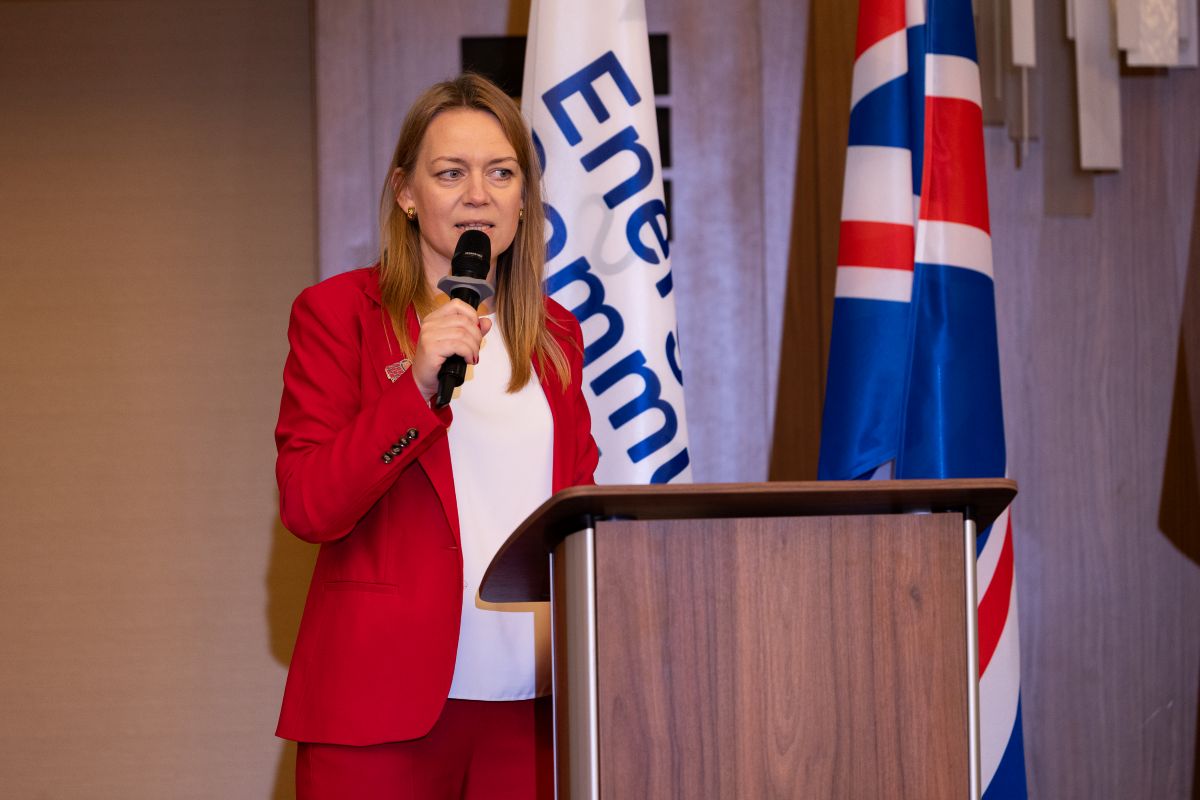
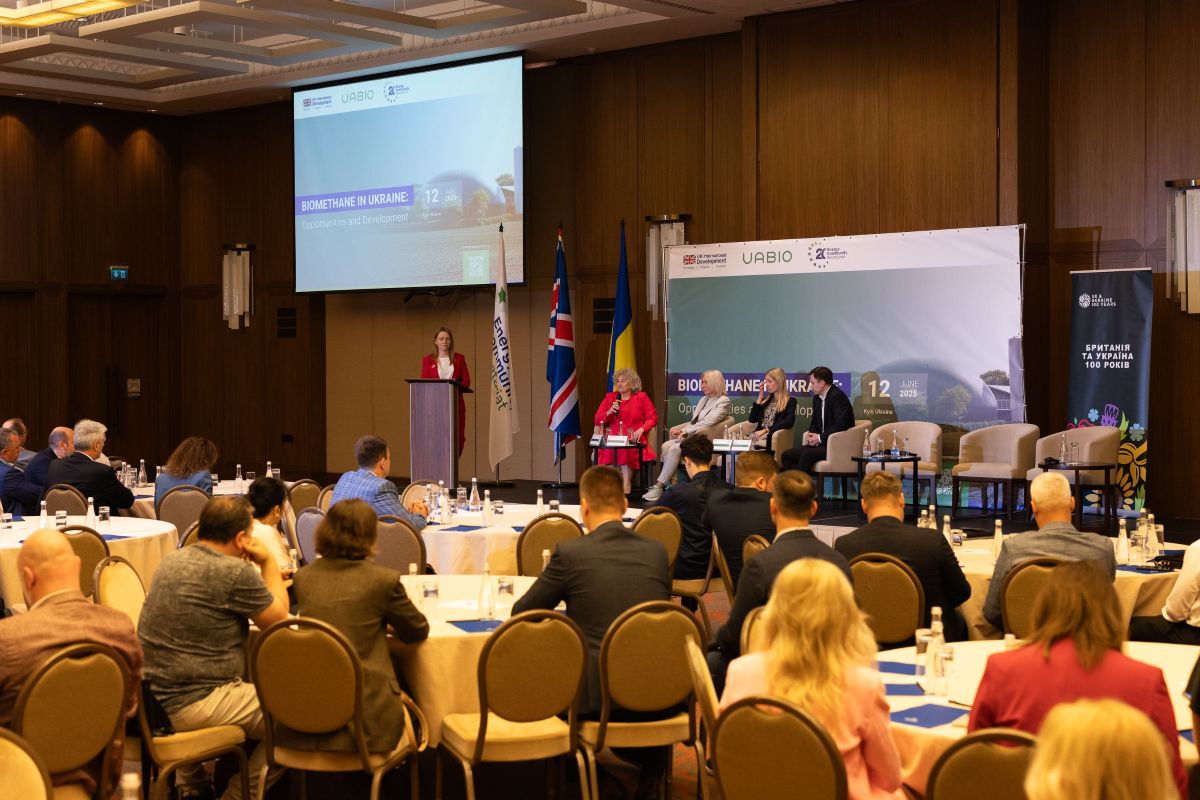
Session 1 – First Biomethane Experience in Ukraine
State of the art and prospects of biomethane production in Ukraine | Georgii Geletukha, Bioenergy Association of Ukraine
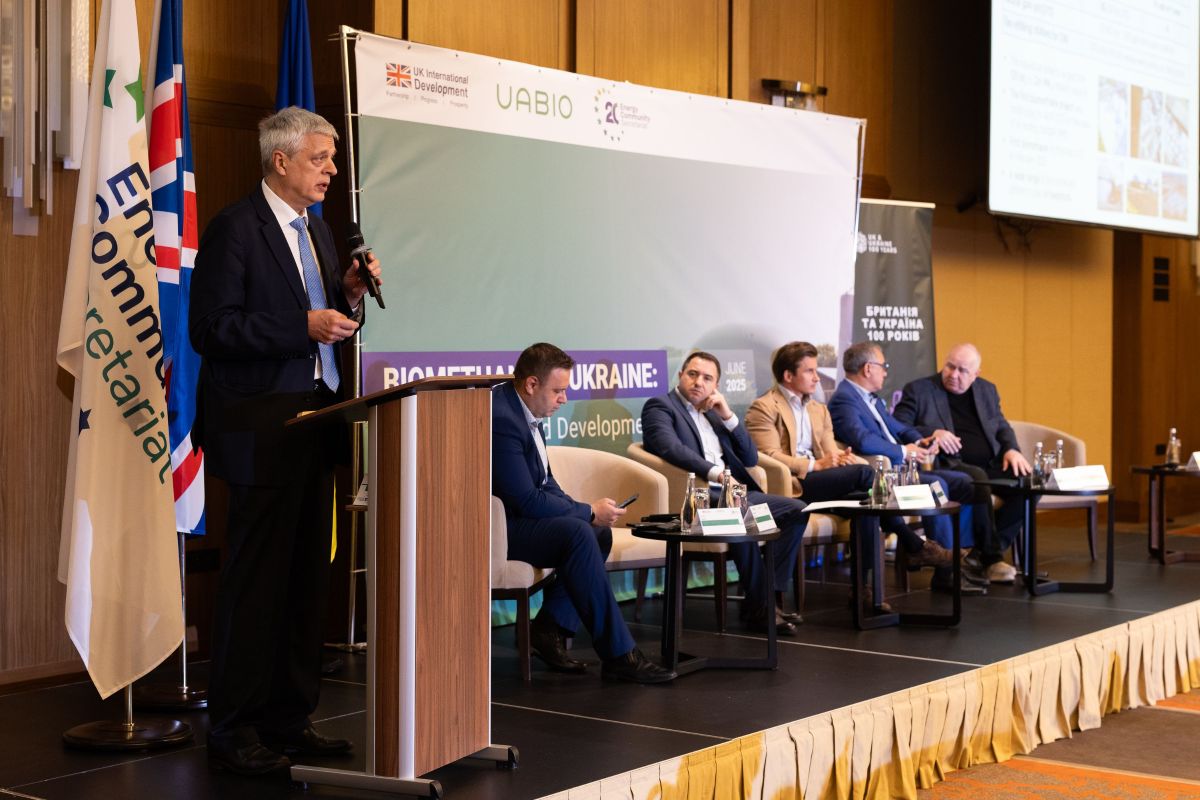
“We currently have 85 biogas plants and 4 biomethane plants with a total capacity of 41 million cubic meters of biomethane per year. We plan to produce 111 million cubic meters of biomethane per year until the end of the year. Ukraine has one of the largest biomethane production potentials in Europe. Our strategic goal is to supply 20% of biomethane to the EU”.
“The total potential of Ukraine is estimated at 21.8 billion cubic meters of biomethane per year. We also believe in biogas from cover and intermediate crops. The so-called second harvest. In general, biomethane production is profitable and attractive to investors”.
Learn more in the presentation by Georgii Geletukha
Experience of biomethane production and export of VITAGRO ENERGY LLC | Volodymyr Ivakhiv, VITAGRO ENERGY LLC
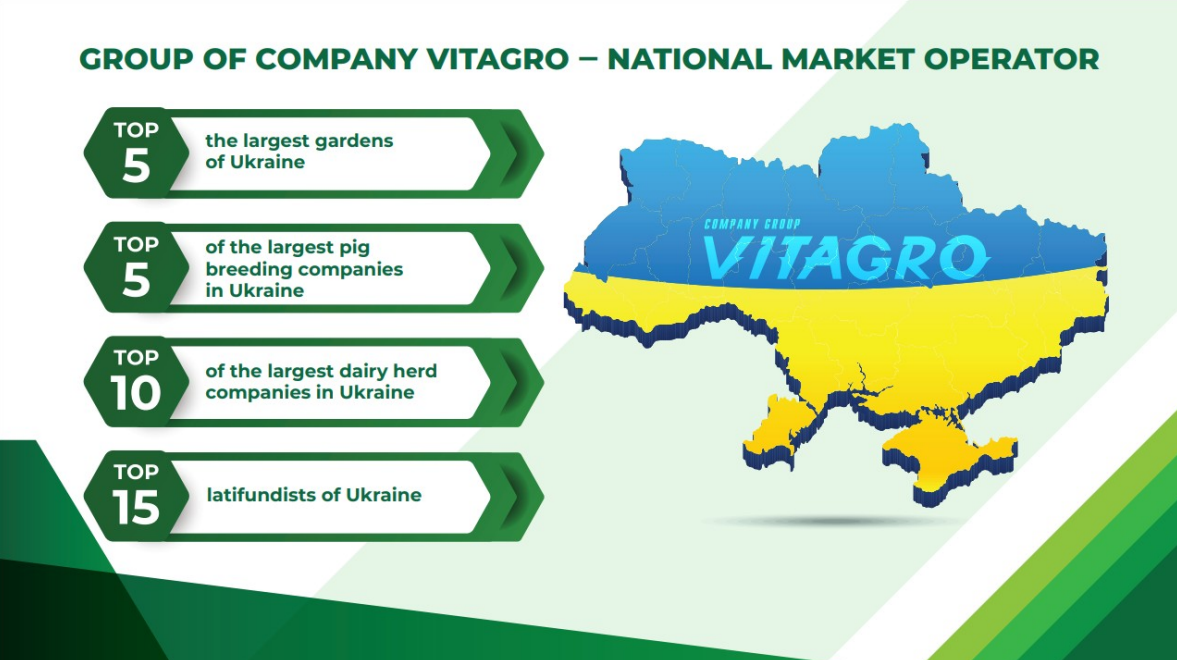
“Ukraine is moving in this direction very quickly and is outpacing its competing neighbors in the biomethane market. We started our project even before the full-scale invasion. In 2023, it was already built, but only last year, after all legislative procedures were settled, we launched the first biomethane in the Ukrainian gas transportation system. In February this year, we made the first export of biomethane to the EU”.
“Ukrainian producers have additional logistics costs that EU producers do not have. Also, Ukrainian producers also act as a trader and have some limited opportunities to sell biomethane to the the European market”.
Learn more in the presentation by Volodymyr Ivakhiv
Andriy Zhupanyn, Verkhovna Rada of Ukraine
“The Verkhovna Rada has good support for biomethane producers. We promptly solve existing problems and make appropriate changes to the biomethane legislation. If you see any problems, please contact us, and we will try to solve them. I am proud that we are already seeing the development of this sector in Ukraine even during the war. Congratulations to everyone! We have created a new sub-sector of the economy that has great potential. The number one task now is to switch all 80 biogas plants to biomethane”.
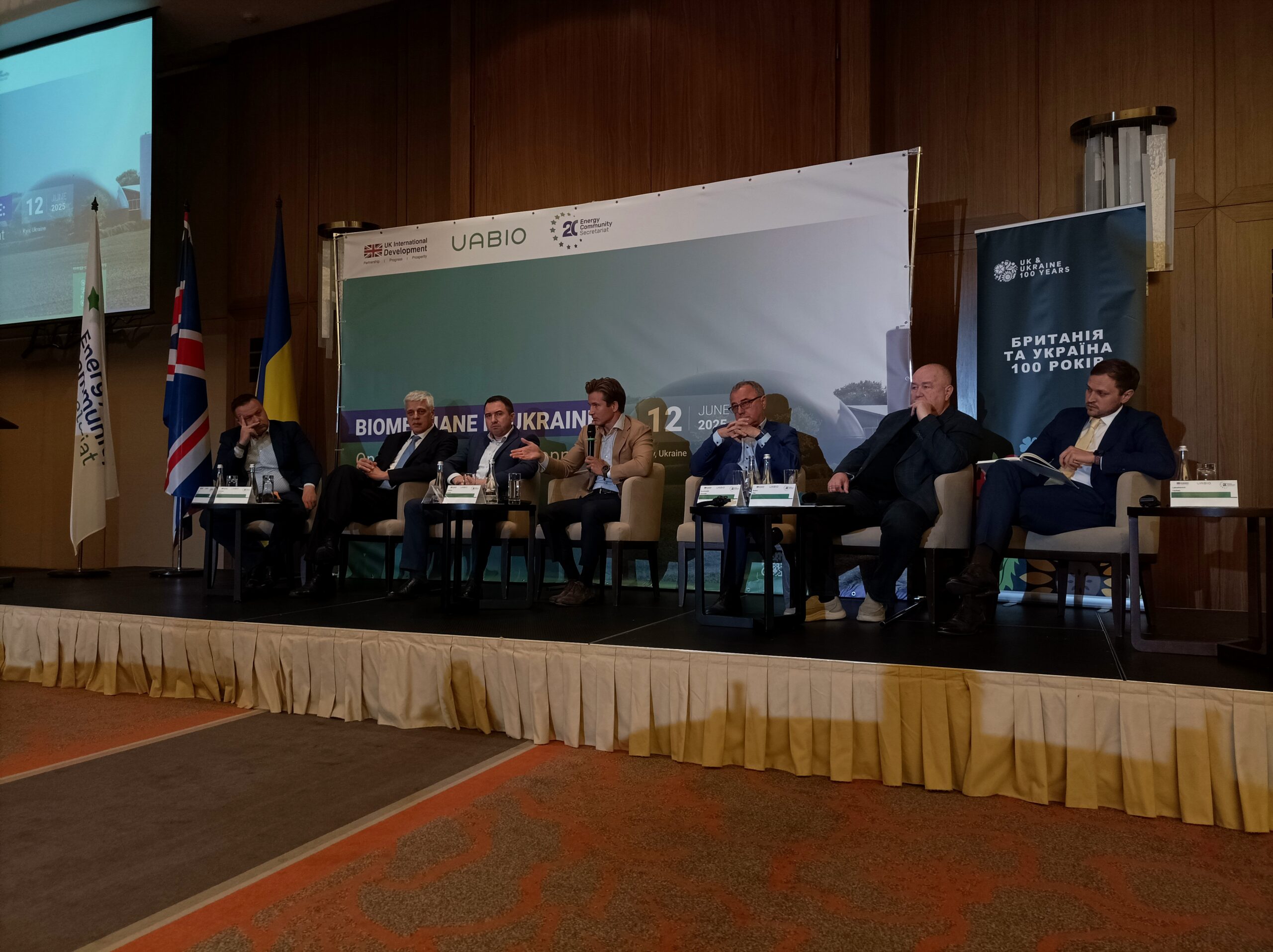
Experience of biomethane production and export of MHP VERDANT LLC | Adomas Audickas, MHP VERDANT
“To solve the existing problems of the sector, we need to have a significant political body that can and will solve them not only in Ukraine but also in cooperation with the EU.
On what do we need to work?
- Europeans are not very keen on buying our biomethane.
- The EC still raises many questions. For example, Germany has no legislation restricting biomethane from third countries. But there is a practice at customs.
- One market that is open to Ukraine is the UK market, but transportation there is very expensive.
- Our goal is to reduce CO2 emissions in the gas sector”.
Experience of biomethane production of Gals Agro LLC | Oleh Riabov, Gals Agro
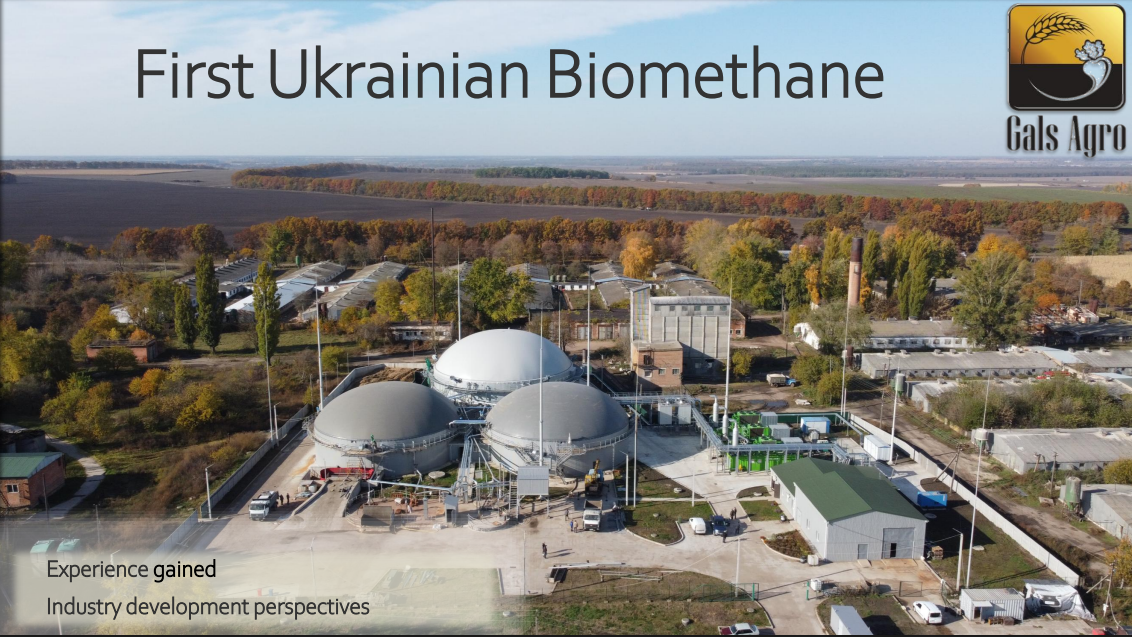
“The industry is being formed, it has potential, but everyone needs to work hard to make it successful, including the highest political level”.
“Biomethane is a product that can not only bring Ukraine foreign exchange earnings but also take them away from the aggressor. However, Ukraine needs to develop the industry much more actively so that the number of new plants is not just a few, but dozens. If we do not accelerate, we risk repeating the path of the biogas sector, when only large agricultural holdings opened biogas plants”.
Learn more in the presentation by Oleh Riabov
Prospects of Synthetic Renewable Methane production (methanation of CO2 and H2) | Oleksandr Dombrovskyi, MHP Eco-Energy
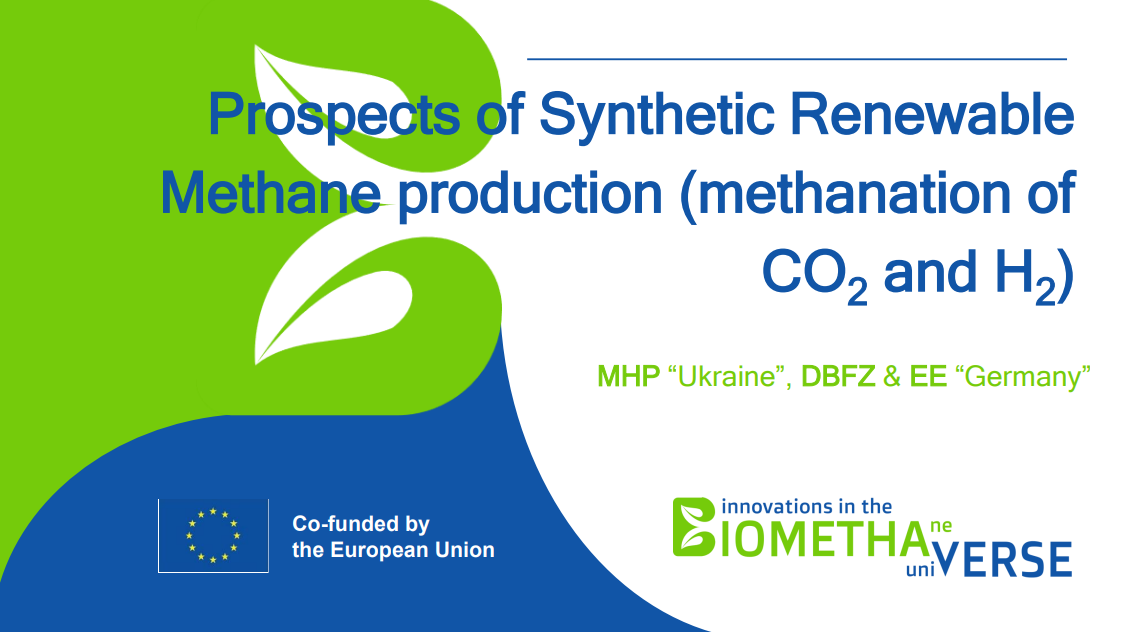
“We have to take into account the real processes that are taking place: the war between fossil fuels and renewables is escalating”.
“We built the first mobile container electrolyzer for the production of green hydrogen in Kyiv. Thus, we can integrate biogas and hydrogen technologies. Over the past 10 years, Ukraine has built a very innovative and technologically advanced industry that is not worse than European projects. The use of CO2 and green hydrogen makes it possible to increase the production of e-methane”.
Learn more in the presentation by Oleksandr Dombrovskyi
Session 2 – Biomethane Infrastructure in Ukraine
Experience on biomethane plants connection to distribution gas grids of Ukraine | Sergiy Minin, Gasmeregy LLC
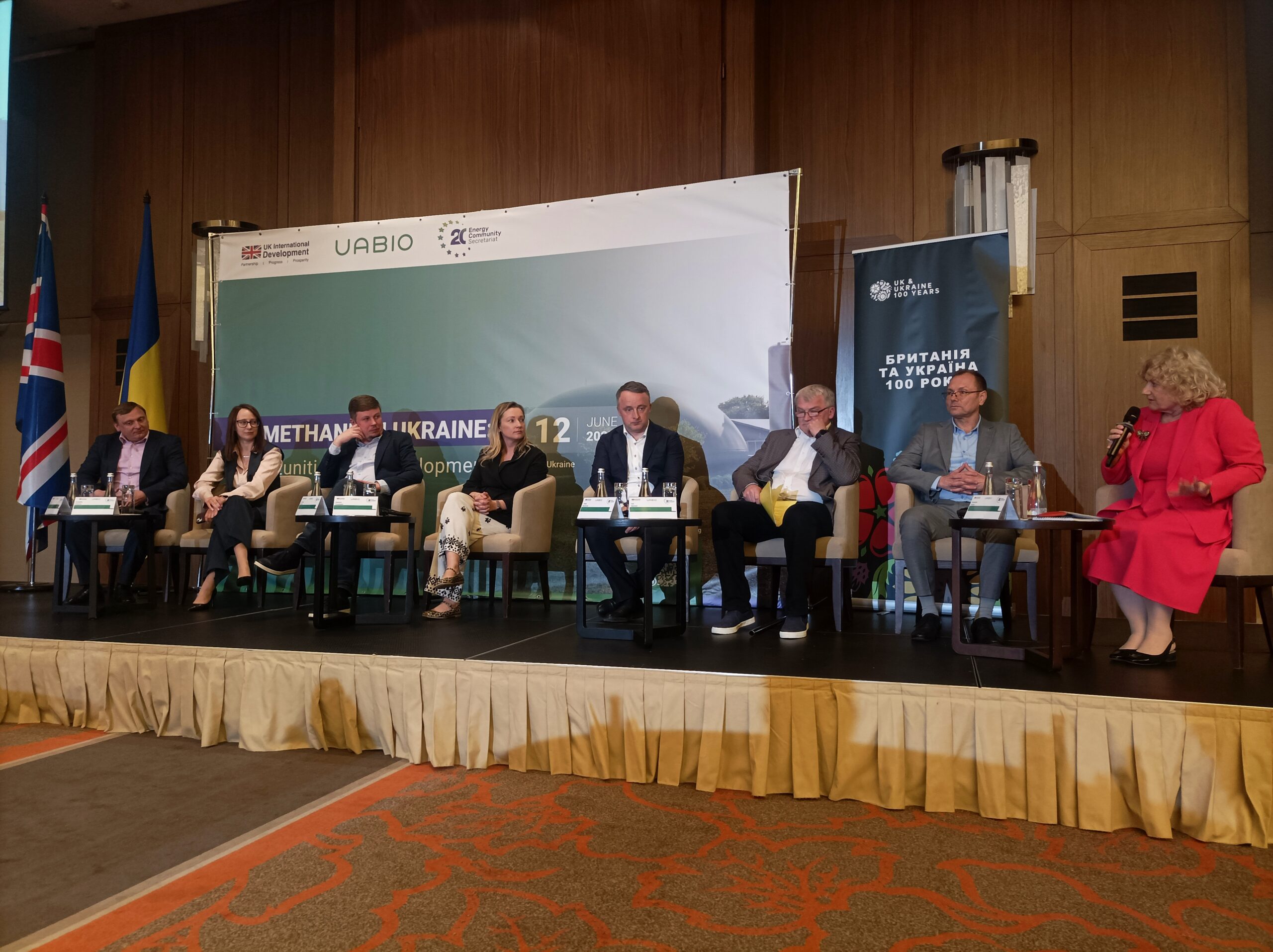
“Last year was crucial for us. We held many meetings and discussions. We had a number of open questions and warnings, but we were assured that the biomethane was of high quality. When we were able to test it, we realized that it was true”.
“For convenience, we have an algorithm for connecting biomethane plants to gas networks on our website. The key process is the first one — the business entity’s application to us with an official letter”.
Experience on biomethane plant connection to transmission gas grids of Ukraine | Kateryna Kovalenko, Operator GTS
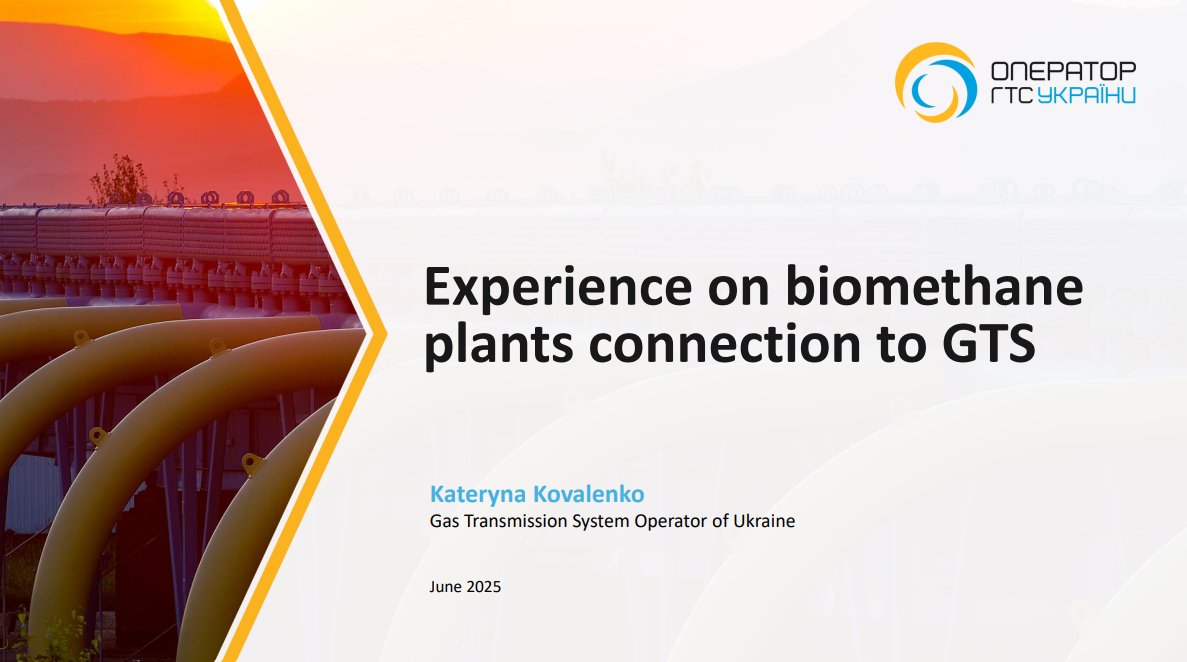
“The GTS operates high-pressure gas pipelines, which complicates the process of connecting plants and makes it more expensive. One of the important requirements is that the parameters of biomethane should be consistent with natural gas in terms of their chemical and physical properties”.
“We are trying to conduct explanatory work. We explain that it is necessary to first explore the possibilities of joining the GDS, as it will be cheaper and easier”.
Learn more in the presentation by Kateryna Kovalenko
Potential of Ukrainian underground gas storage facilities for biomethane storage | Stanislav Ignatiev, Institute of Gas Transportation of JSC Ukrtransgaz
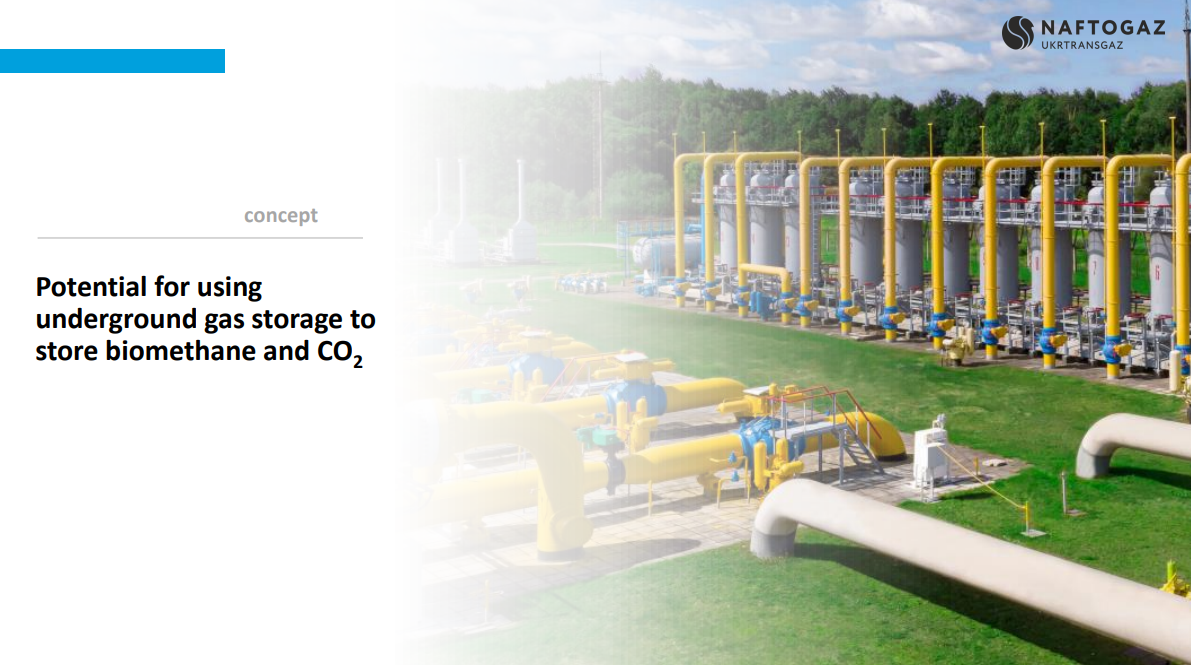
“Our gas storage facilities are the third largest in the world and the first in Europe by volume. Therefore, we will accept all the biomethane produced in them. We are actively developing and looking towards green generation”.
“We have assessed depleted gas fields, and there are two of them (Malygorozhanske and Rudkivske) that can store large volumes of CO2. We are currently looking for funding to develop such projects”.
Learn more in the presentation by Stanislav Ignatiev
Experience of Bureau Veritas Ukraine in biomethane ISCC certification | Kateryna Postolenko, Bureau Veritas Ukraine
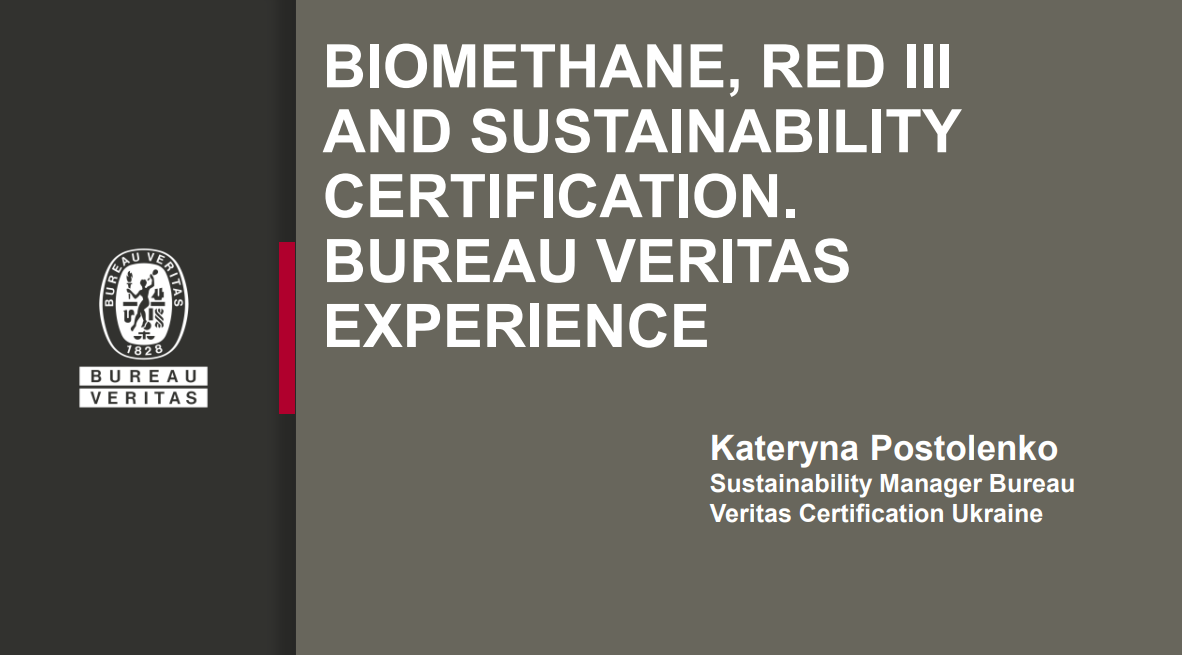
“Sustainability criteria are important for confirming that biofuels are produced from the relevant biomass. So, first of all, the feedstock must meet the sustainability criteria. In general, there are a number of different certification systems that are fairly well standardized; the most popular is ISCC”.
“Not only the biomethane producer, but also the entire supply chain, from the biomass producer to the biomethane trader, should be certified”.
Learn more in the presentation by Kateryna Postolenko
Legislation in biogas and biomethane areas in Ukraine | Vitaliy Radchenko, CMS Ukraine
“Many of the participants worked on the opening of biomethane exports from Ukraine. We faced a number of challenges in doing so, as natural gas exports are still closed due to the war. However, through joint efforts with all stakeholders, we managed to make these changes to the legislation”.
“Currently, we still have to adopt a large number of legislative acts that we have to comply with as a future EU member. Unfortunately, I don’t think businesses and companies fully understand what’s ahead of them. There are a lot of directives and regulations on biomethane that we have to adapt to”.
Biomethane zoning for Ukraine | Yuri Matveev, Bioenergy Association of Ukraine
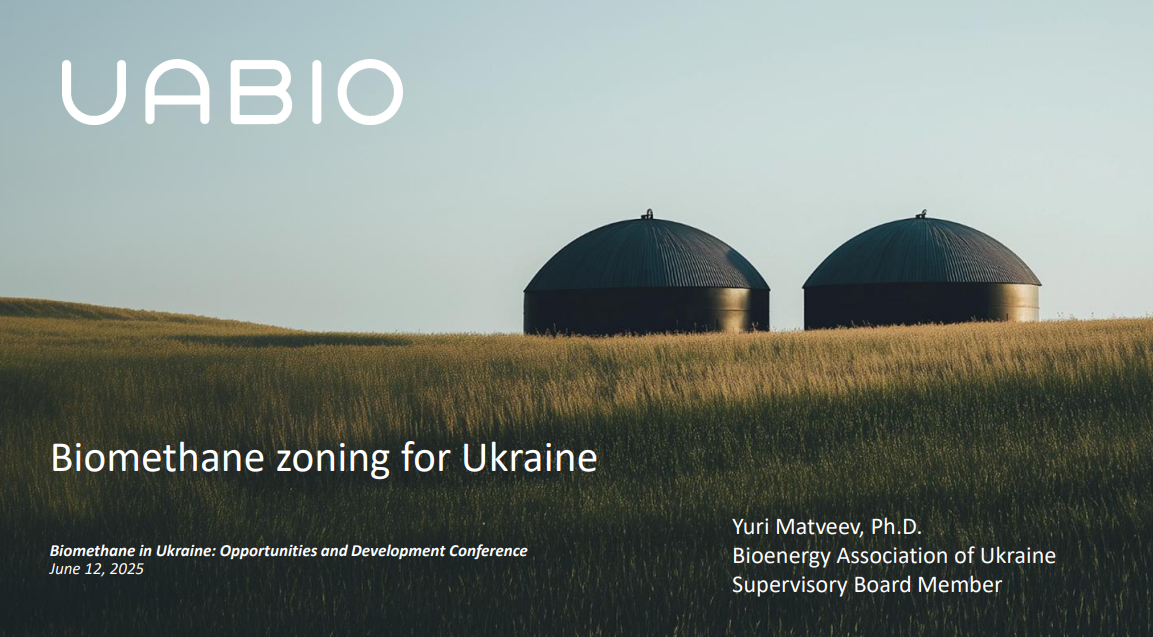
“Zoning is the identification of the best regions for biomethane production. This strategic approach aims to streamline the establishment of new biomethane plants by taking into account various important factors. The zoning is based on the availability of feedstock, proximity to gas infrastructure, demand for biomethane, and other factors such as environmental impact and military operations”.
“Zoning contributes to the economic development of the region. For example, in France, where the zoning map was made back in 2020, the biomethane market is growing the fastest in the EU. For Ukraine, we have zoned the potential for biomethane production by region and district”.
Learn more in the presentation by Yuri Matveev
Carbon intensity of biomethane for different raw materials and production technologies | Volodymyr Kramar, Bioenergy Association of Ukraine
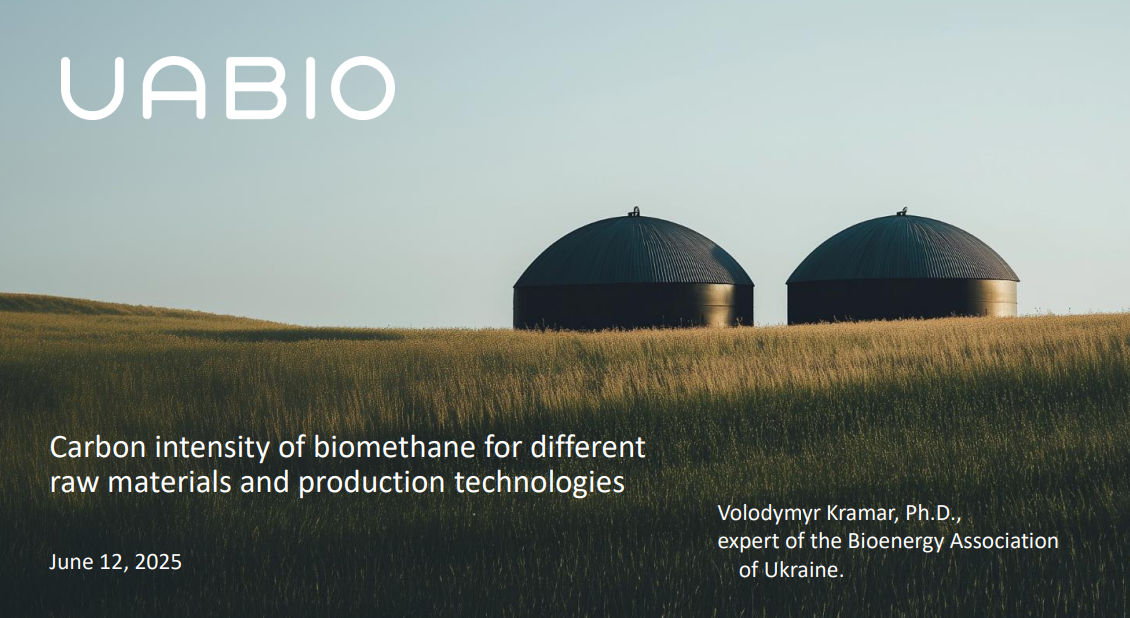
“For products emissions need to be taken into account during the entire growing and harvesting process. When it comes to residues, we only take into account emissions from transportation during the collection of these residues. Also, if we inject biomethane into the grid, we have to take into account the emissions of biomethane during transportation through the grid.
The most effective measures include:
- eliminating methane emissions from open digestate storage areas;
- replacement of carbon dioxide produced during the combustion of fossil fuels with carbon dioxide released from biogas during upgrading”.
Learn more in the presentation by Volodymyr Kramar
Session 3 — Next Steps for Biomethane Production in Ukraine
Experience of biomethane plants construction and exploitation of Pro-Energy LLC | Malvina Kozlovets, Pro-Energy
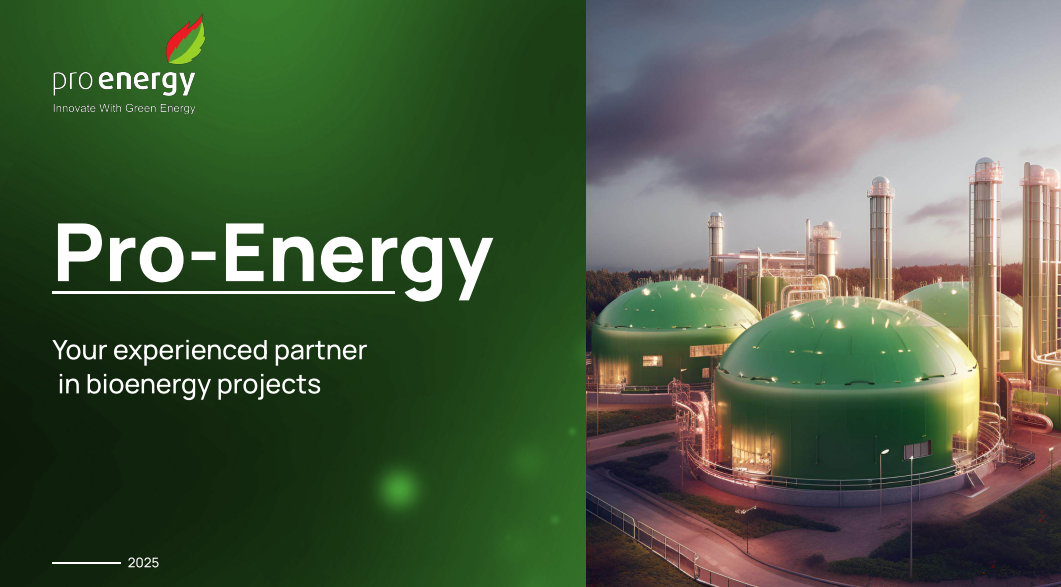
“What are the benefits of a biogas plant for the owner?
- Ecological disposal of various wastes.
- The prospect of becoming a player in the EU energy market.
- An excellent reputation as a responsible and sustainable company.
- Energy independence.
- Optimizing costs and increasing competitiveness”.
“The Pro-Energy team is focused on real partnerships with clients. We stay with the client after the launch under any circumstances. A pandemic, a full-scale war, and other unpredictable situations will not prevent us from providing guarantee service in any way”.
Learn more in the presentation by Malvina Kozlovets
Results of Analytical Note No. 1 “Advanced biomethane production from intermediate/cover crops” | Tetiana Zheliezna, Bioenergy Association of Ukraine
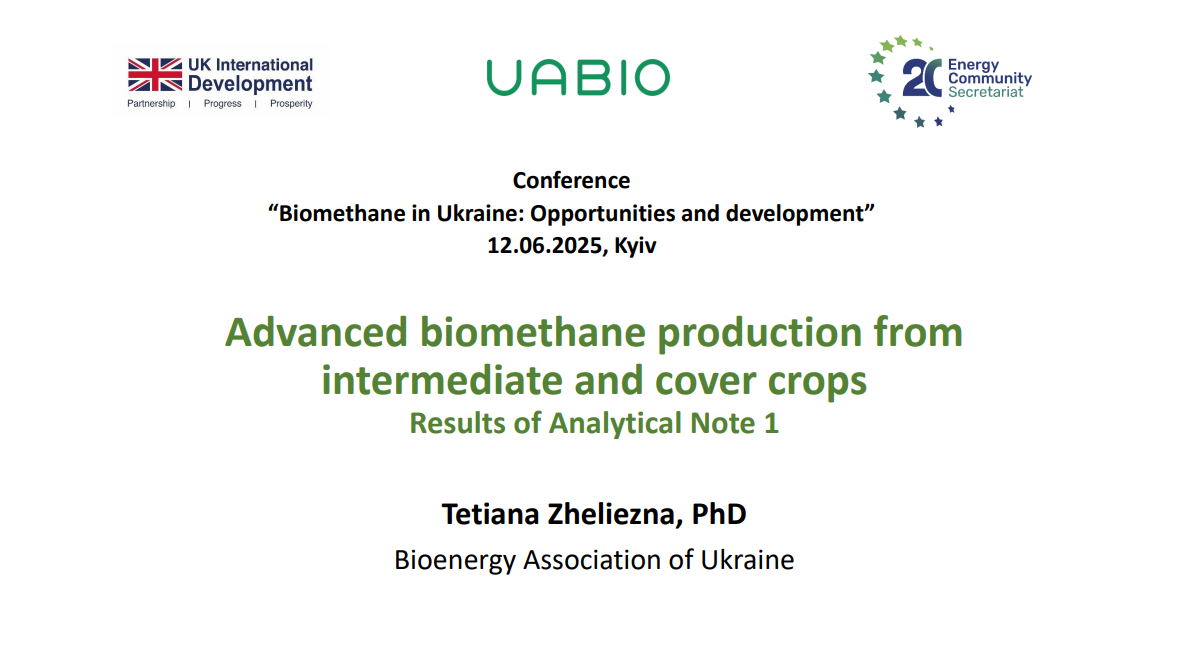
“Crops can be divided into two broad categories — main and intermediate crops. Main crops occupy the field for most of the growing season. Intermediate crops can be grown when the field is free of main crops. In the classical version, intermediate crops are grown to better prepare the soil for planting main crops”.
“Spain, France, Italy, and Germany are expected to be the leaders in terms of biomethane production potential from intermediate crops in 2040. The potential for biomethane production from intermediate crops in Ukraine is about 9.23 billion m3 per year”.
Learn more in the presentation by Tetiana Zheliezna
Results of Analytical Note No. 2 “Advanced biomethane production from ligno-cellulose materials” | Petro Kucheruk, Bioenergy Association of Ukraine
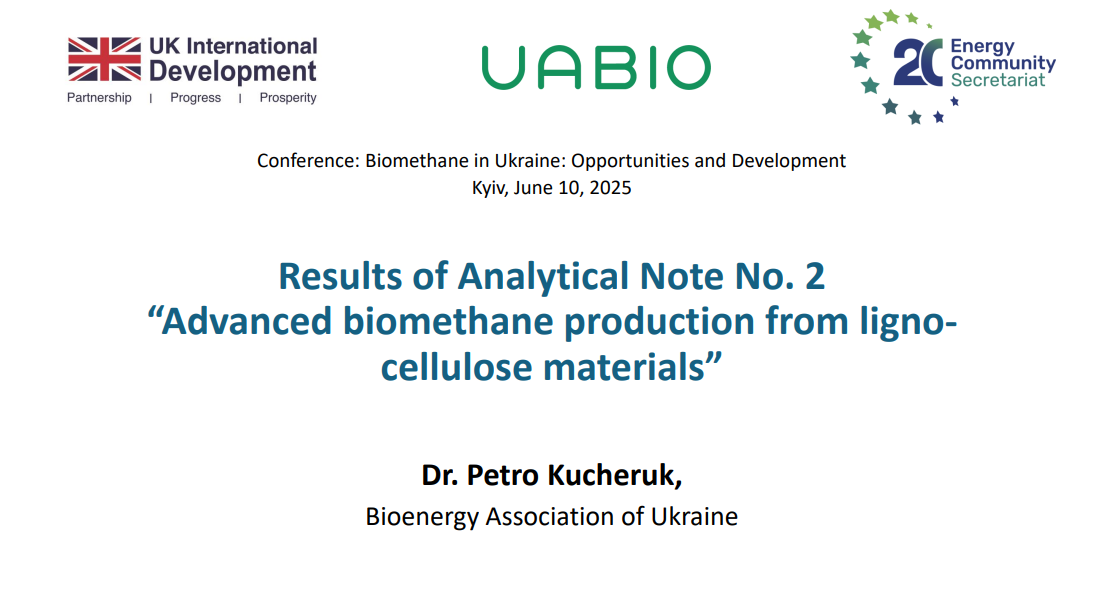
“Biomethane from lignocellulosic raw materials will definitely be competitive and in demand. The potential of this raw material in Europe and the world is significant. Straw has many uses, it is available as a raw material, it is harvested, but there is quite strong competition for it between different industries. However, it is more difficult to ferment, it is easier to ferment corn silage or manure.
The complexity of straw fermentation is due to:
- low moisture content;
- high (non-optimal) C:N ratio;
- hydrophobicity;
- high lignin content and low bioavailability.”
Learn more in the presentation by Petro Kucheruk
Results of Analytical Note No. 3 “Advanced biomethane production from micro-algae harvested on digestate of biogas plants” | Mariana Hyvel, Bioenergy Association of Ukraine
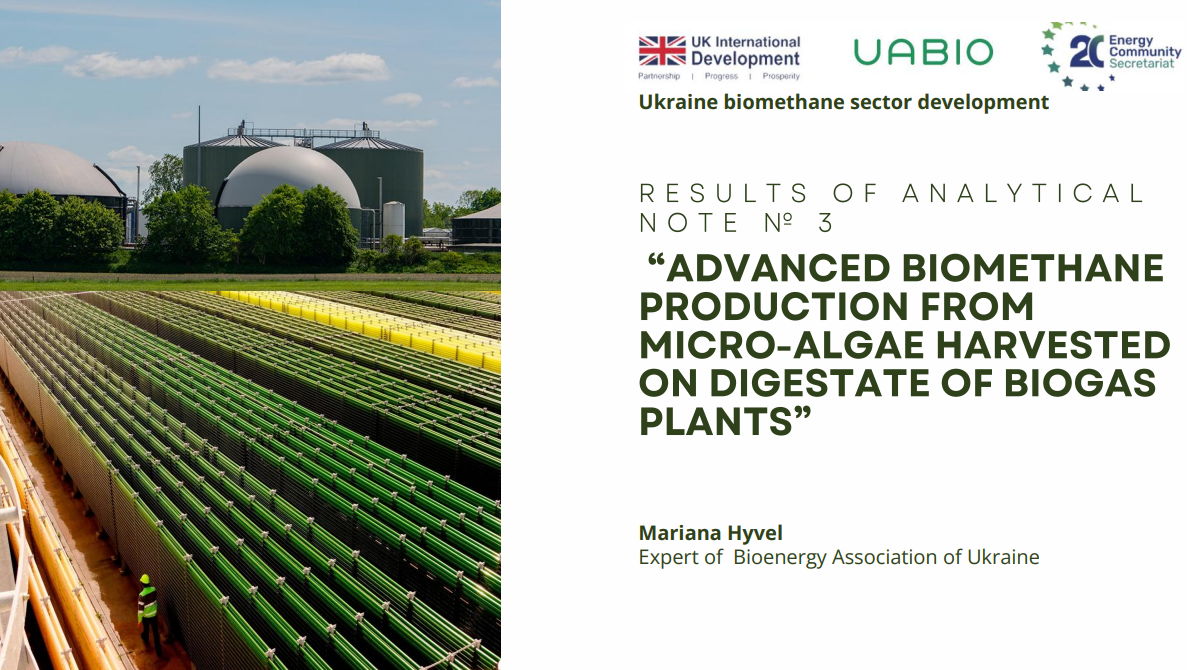
“Microalgae, like land plants, grow and reproduce through photosynthesis. They can convert sunlight into chemical energy with a high photosynthetic efficiency (6%-8%) compared to land biomass (1.8%-2.2%)”.
“Ukraine is already carrying out advanced research on the use of digestate and microalgae for sustainable biomethane production in cooperation with leading UK institutions and with the support of international funding. In addition, the growth and cultivation cycle of microalgae is 15 days, compared to agricultural crops, for which this cycle occurs once or twice a year”.
Learn more in the presentation by Mariana Hyvel
Prospects for biomethane in the transport sector of Ukraine | Semen Drahniev, Bioenergy Association of Ukraine
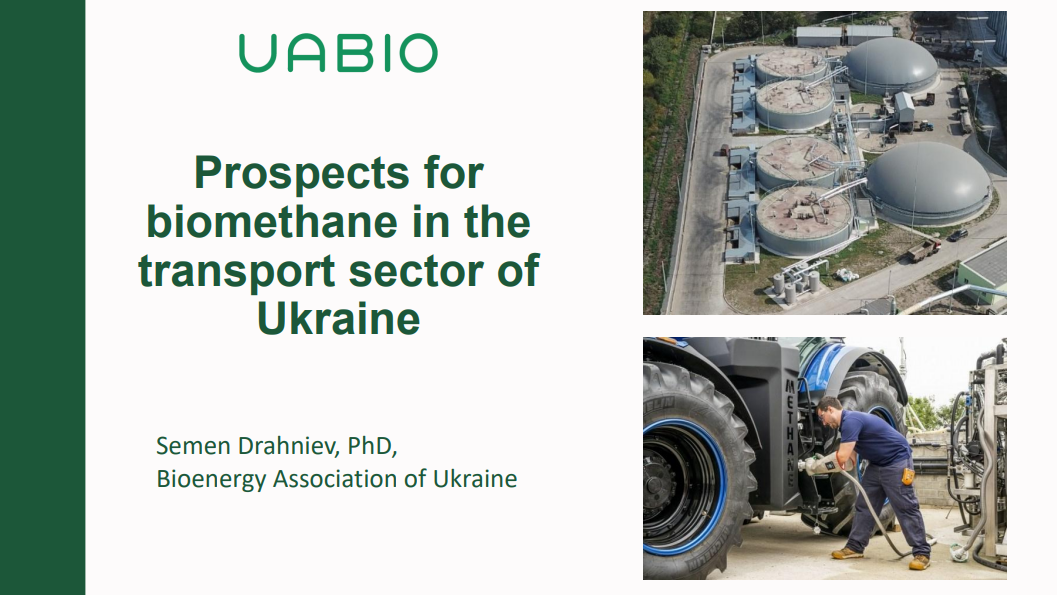
“In 2022, transport accounted for 31% of final energy consumption in the EU. Road transport (73.6% of all energy consumed in transport in the EU) is significantly ahead of air transport (11.4%), water transport (13.0%) and rail transport (1.4%)”.
“In 2020, the final consumption of motor fuels in Ukraine amounted to 5,156 thousand tons of diesel fuel and 1,691 thousand tons of gasoline, while agriculture is one of the largest consumers (over 19% of the total volume of diesel fuel and 5% of gasoline)“.
“The use of biomethane as a motor fuel can reduce greenhouse gas emissions not only by replacing fossil fuels, but also by avoiding methane emissions, for example, in manure storage and waste disposal.”
Learn more in the presentation by Semen Drahniev
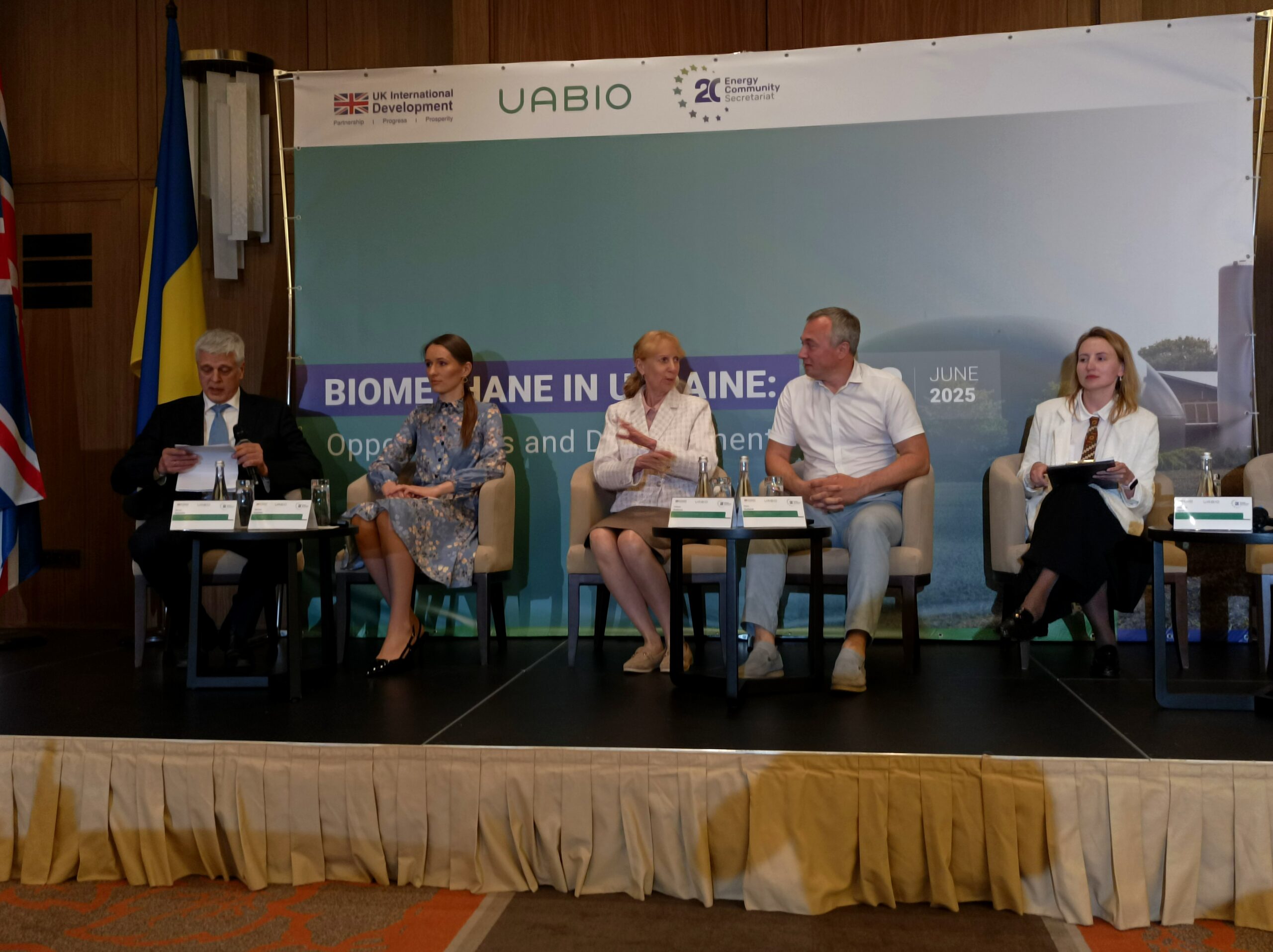
We would like to thank the organizers of the event — the Energy Community in cooperation with the UK Department for International Development (FCDO) — for the excellent organization, cozy atmosphere and large number of experts gathered together.
We are confident that discussions of this level will contribute to the ever-increasing development of the biomethane sector in Ukraine and the rapid removal of all barriers both within our country and from the EU.
Follow UABIO’s updates on the website and in social media so you don’t miss upcoming important events!
